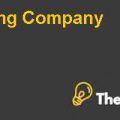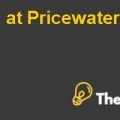
Problem Diagnosis
This paper attempts to perform the valuation of the performance coating division of DuPont Corporation on the basis of a different set of assumptions as provided in the case study and then recommend a final bid price and a decision to Ellen Kullman, the CEO of the DuPont Corporation. The valuation method, which has to be followed in this case analysis, is the leveraged buyout method incorporating the adjusted present value concept.
Therefore, if a private equity sponsor is interested in the purchase of the company, as opposed to the strategic buyers, then a recommended minimum bid price needs to be decided by the management of the company. The reason for the high interest of the private equity sponsors in this transaction is due to the fact that the amount of the transaction is $ 4 billion, which is quite high and can be only financed by taking a heavy debt load which is possible for private sponsors and not for individual strategic buyers.
Thus, the range of the values for the performance coatings division, the value created by the private sponsors, and the maximum value offered by the private equity sponsors in order to achieve a minimum required rate of return of 20% need to be performed in the analysis of this case.
Question 1
What are some of the important features of APV, and why is it a useful approach for valuing an LBO?
Adjusted present value is a valuation approach incorporating the concept of time value of money. It is an investment appraisal approach, which is more similar to the discounted cash flow method of valuation. The adjusted present value method is basically used to value a firm, which is all equity financed which could also be called as a base case. After the valuation for the base case has been performed then the valuation of the benefits associated with the financing method which is debt financing as adjusted present value method is mostly used in valuating an LBO transaction.
Some of the important features of adjusted present value are as follows:
- The main benefit and also the main reason for applying the adjusted present value method is the tax shield from the interest payments which are tax deductible.
- The adjusted present value method is used in the LBO transaction and the reason for this is that the transaction is underlined with an excessive amount of debt.
- The amount of the tax shield is substantial enough and that’s why separate valuation of the base case and the tax shield is necessary.
- The adjusted present value models look technically similar to the discounted cash flow models. However, the difference is that the un levered cash flows are discounted at the company’s cost of equity assuming the company is 100% equity financed.
- The cost of equity is un levered which means the beat which is used in the calculation of the cost of equity through the capital asset pricing model is not adjusted for leverage.
- The interest is excluded from the cash flow calculations in order to calculate the un levered free cash flows of the firm to value the equity of the company only in the base case.
- The present value of the tax shield is calculated using the cost of debt as the discount rate.
- The final enterprise value is calculated by adding the value of the base case and the present value of the tax shield in the transaction over the investment horizon.
- The adjusted present value model and the discounted cash flow or WACC model would generate same results if the capital structure of the company remains stable over the entire investment horizon.
Reasons for using APV for LBO Valuation
The adjusted present value method is primarily used in order to value a leveraged buyout model and the reason for this as previously stated is that the transaction is based upon a substantial amount of debt through which the transaction is financed and therefore the savings on tax as a result of the interest payments on debt are significant. Since the borrowing capacity of the firm is increased, therefore the advantages associated with the debt are increased significantly...................
This is just a sample partial case solution. Please place the order on the website to order your own originally done case solution.












